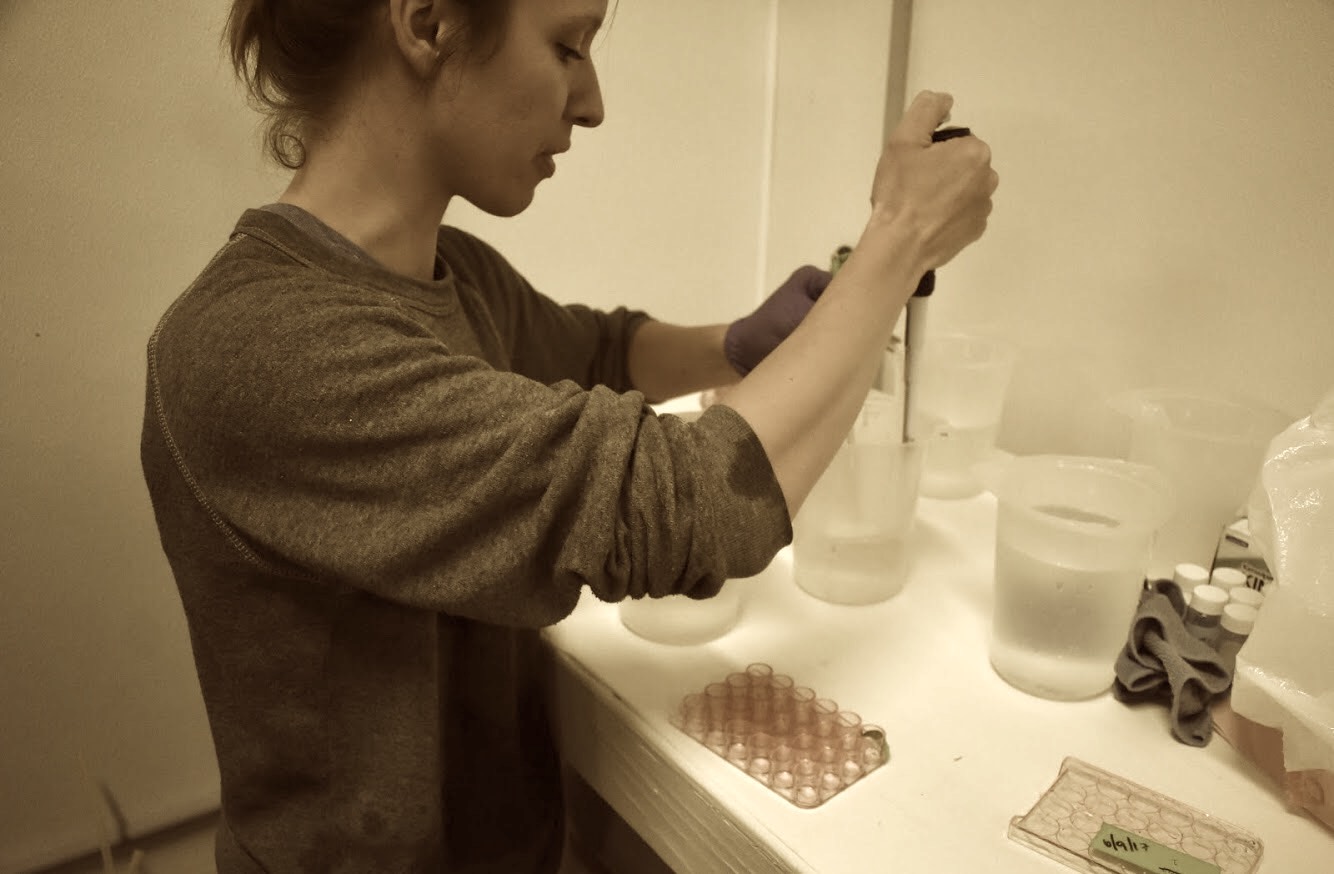May 29th & 30th, at Manchester
May 29th, 2017
- Collected and counted larva today; not too many new.
- Steven imaged plate #1 & #2 in my backed-up well plates.
- Setting tank location is TBD- Stuart will discuss with Ryan to see if I can use one of the tanks inside the hatchery, as it is much cleaner and easier to feed.
- Sampled flow from drippers on larval table and used hemocytometer to count algae. Average concentration is ~113k cells/mL, which is slightly above the 100k cells/mL target, as outlined in the FAO manual. None are below the target. Dosing rate when I sampled was 70, so I reduced to 65. Concentration will, however, depend on how concentrated the algae is in the header tank.

May 30th, 2017
Screened & counted larval buckets today.
Began by screening through 180um (started with bucket #16, SN-6 Ambient). Nothing held on a 180, and the larvae did not look good. I screened through another group, and saw similar poor quality. It became obvious that I needed to separate live from dead. I began setting up a double-bucket system, where the “swimmers” flow into a small bucket w/ banjo, with the assumption that the dead oysters will remain at the bottom of the first bucket. I tested this method a few weeks ago, using the 26L/hr drippers and waiting 6 hours, but there were still many live larvae remaining. I’m hoping that if I increased the time considerably, I will have better success. So, instead of screening through 180 & 100 today I screened through a 224 to remove debris, onto a 100um, rinsed the larvae with FSW, let soak in fresh FSW for a few minutes while I cleaned, then sampled for counts, and returned ALL to the cleaned 5gal bucket, but with the banjo removed, the outflow directed into a 2-gal bucket with a banjo. I installed air stones in both the 5-gal and the 2-gal. I used the 8L/hr drippers. Tomorrow, I will collect the live larvae, clean the 5-gal bucket of the dead larvae (inspecting it to confirm 100% mortality), then return the live to the 5gal. If this method of culling is successful, I will incorporate it into the weekly schedule moving forward.
Ryan provided some insight into potential causes: This time of year is notorious for die-offs due to extreme fluctuations in dissolved gases from algae blooms & crashes. High mortality can create a breeding ground for ciliates. I saw lots of ciliates in my poorest looking samples. Also, many of the SN & NF groups have looked lazy.
Interestingly, the SN & NF groups, which are all being reared on the small table against the wall, had much fewer live as compared to the K & HL groups, which are being reared on the center table. Overall average %Live for the larval rearing table was 43%, and for the center table it was 68%. The K & HL groups also appeared much more active, swimming and feeding. Because of the apparent poor conditions on the larval table, I’m going to move all larvae to the middle table tomorrow. I’ll move the K and HL broodstock to the small table.

